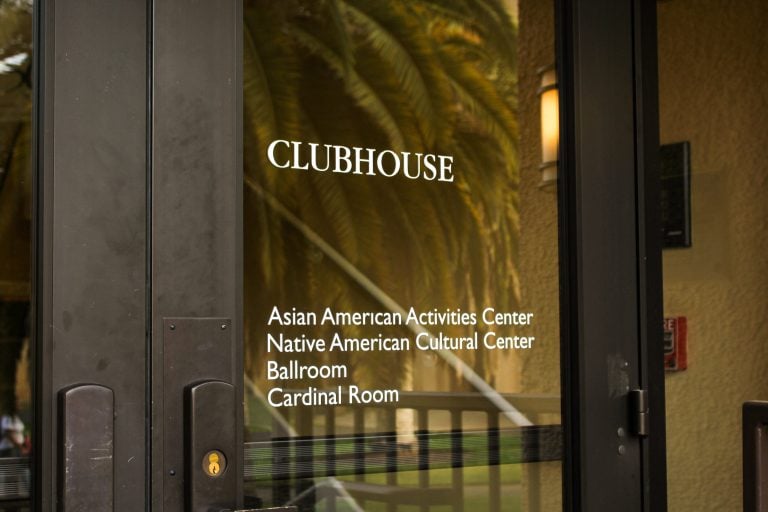Indigenous Stanford students celebrated Native American Day — a holiday that honors Native American culture — last Friday. On campus, the Native American Cultural Center and Native American Studies sponsored an event celebrating the role of Indigenous people in California’s history.
While many students underscored the importance of celebrating the holiday, some criticized what they described as a lack of recognition for the day and the continued observance of Columbus Day in some states.
Native American Day was first established in California in 1968 when then-Governor Ronald Reagan signed a resolution declaring the fourth Friday of September as the state’s Native American Day. In 2014, the California State Assembly codified the holiday by legislating Native American Day as a state holiday.
But across states, the date for Native American Day varies. The holiday originated in 1916 in New York, where it is celebrated on the second Saturday of May. But California, Illinois, Massachusetts, Nevada and Tennessee celebrate the day on the fourth Friday of September.
Other states, such as New Mexico, Maine, Vermont and Wisconsin, substituted Columbus Day with Native American Day. Oklahoma and Alabama recognize Native American Day simultaneously with Columbus Day. But as of today, no national Native American Day exists, though Columbus Day is still federally observed.
As to the meaning of Native American Day, Alyssa LaTray ’23 of the Little Shell and Blackfeet tribes said the day brings attention to the struggles and triumphs of Indigenous people.
“Native American Day is an acknowledgment of both our people’s suffering and our resilience. America was built on the stolen land of my family and the hundreds of other tribes that have now been forcefully assimilated,” LaTray said. “Native American Day is a reminder that we are still here.”
LaTray added the celebration of Native American Day protests the erasure of Indigenous peoples and cultures from mainstream American society.
Some Indigenous students echoed LaTray’s support for the holiday and criticized the continued observance of Columbus Day as a federal holiday.
“Something that would be great to do for Native American Day would be to get rid of Columbus Day,” said Amari Jones ’23 of the Diné tribe. “With Columbus Day, there’s the preserving of this conception that Columbus discovered the Americas.”
Jones said that the approach of putting Native American Day and Columbus Day on the same day furthers the misconception that Columbus discovered the Americas and diminishes the dehumanization and genocide of Indigenous peoples at the hands of Columbus and the first European settlers.
Jones also expressed disappointment that Wednesday’s Associated Students of Stanford University (ASSU) Executive Update did not mention Native American Day or Indigenous People’s Day. She related the omission to the erasure of Indigenous history in American society — which can lead some Americans to believe that Indigenous people are extinct.
ASSU President Christian Giadolor ’21 M.A. ’22 said that the ASSU is aware of Indigenous People’s Day and plans to release an executive statement that will highlight the holiday before Oct. 11, which marks Indigenous People’s Day — a holiday that is different from Native American Day and is celebrated by a number of cities and colleges in lieu of Columbus Day.
Giadolor also said that because last Wednesday’s Executive Update highlighted National Hispanic Heritage Month and the Moon Festival, adding Indigenous People’s Day to the list would not have allowed the ASSU to give full space to each of the celebrations centering around marginalized communities. Giadolor added that every ASSU statement acknowledges Stanford’s relation to and impact on Indigenous communities.
Jones said that although she appreciates the rising prevalence of land recognitions at Stanford and beyond, the recognition of Native American Day is crucial because Indigenous people deserve a designated time in which all members of society can learn about and celebrate Native American culture and history.
“I think that one of the great things about America is that we have all these different cultural days,” said Tim Rosenberger Jr. ’23, a descendant of the Seneca tribe. “But I think often the Native community is out of sight and out of mind. I think there’s a lot of fun and joy in Native culture that people are missing out on.”
It is the responsibility of non-Indigenous people, Rosenberger added, to commit to learning about Indigenous cultures. LaTray said that she hopes non-Indigenous people will develop traditions celebrating Indigenous days.
Jones suggested table talks — an activity in which a speaker or panel poses questions to the audience to be discussed in small groups — to increase the visibility of the holiday. Although some people may be uninterested in hearing and respecting opinions other than their own, table talks could give many Americans insight into Indigenous perspectives, according to Jones.
Another way to display a contemporary view of and celebrate Indigenous cultures, Jones said, is through art.
“I think sometimes you can feel disconnected from the past, but contemporary art bridges that gap,” Jones said, by “highlighting Native American voices in all sorts of different ways, the arts, the history, culture, how it’s perceived in the past and also currently.”
